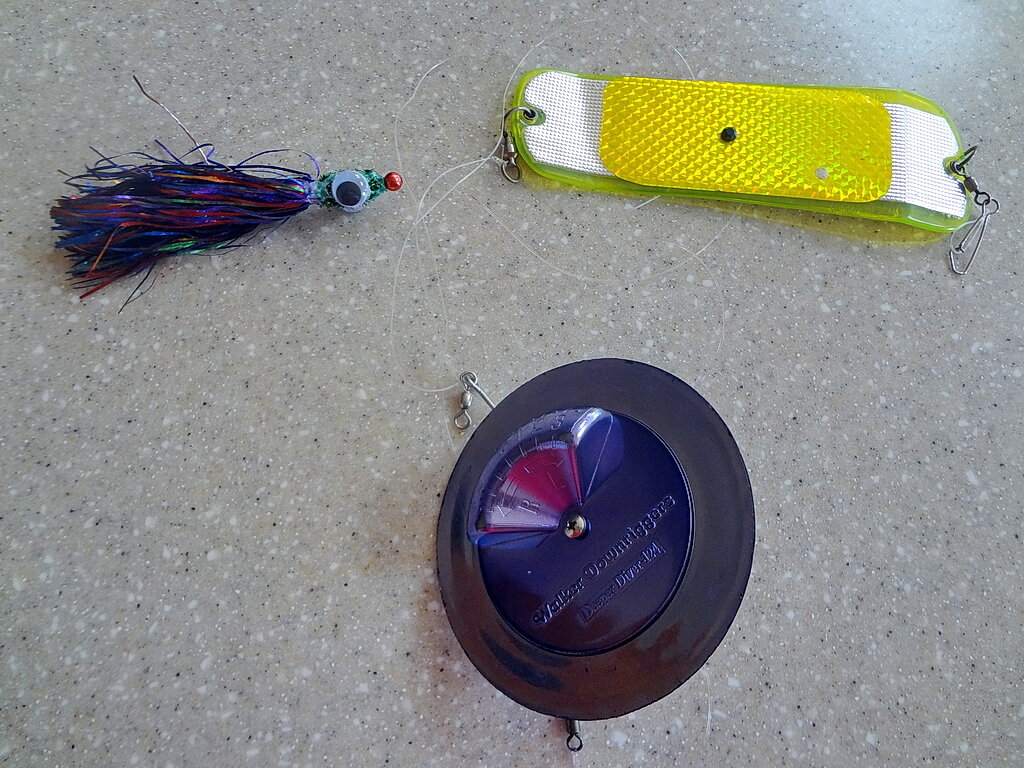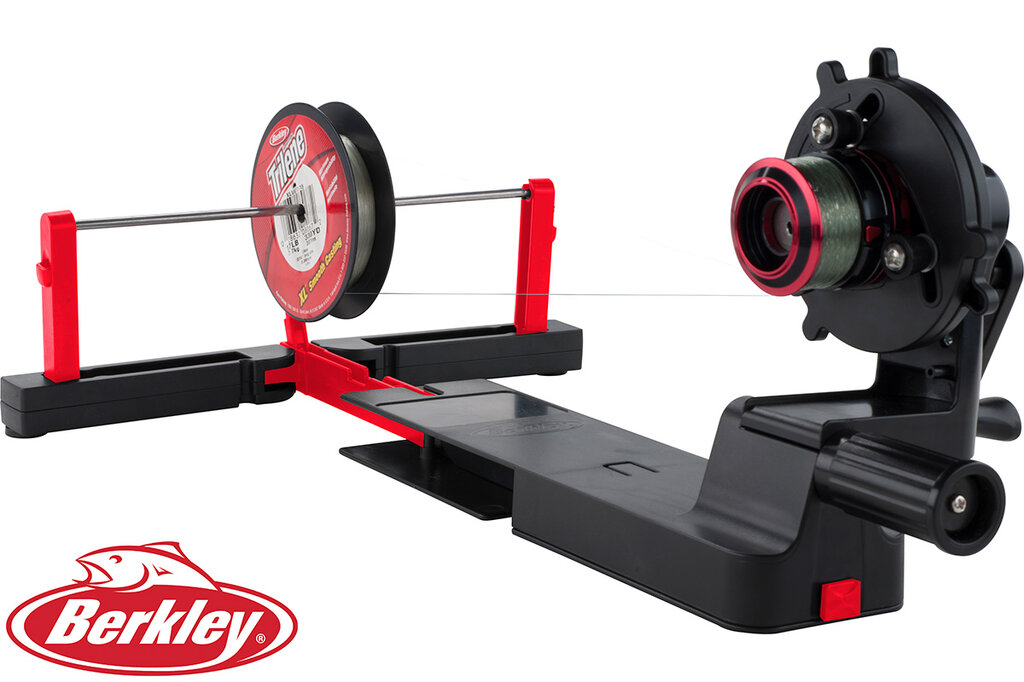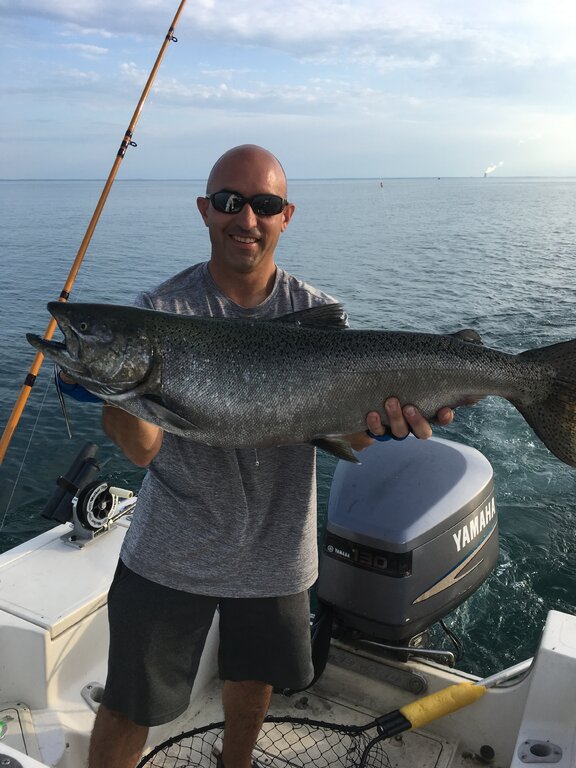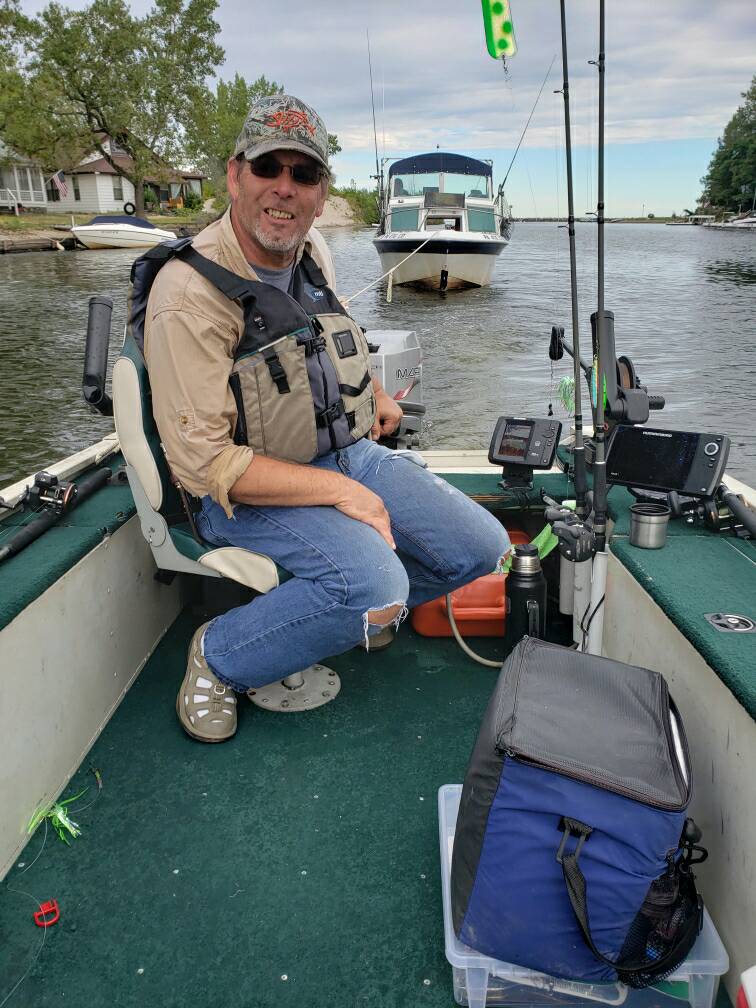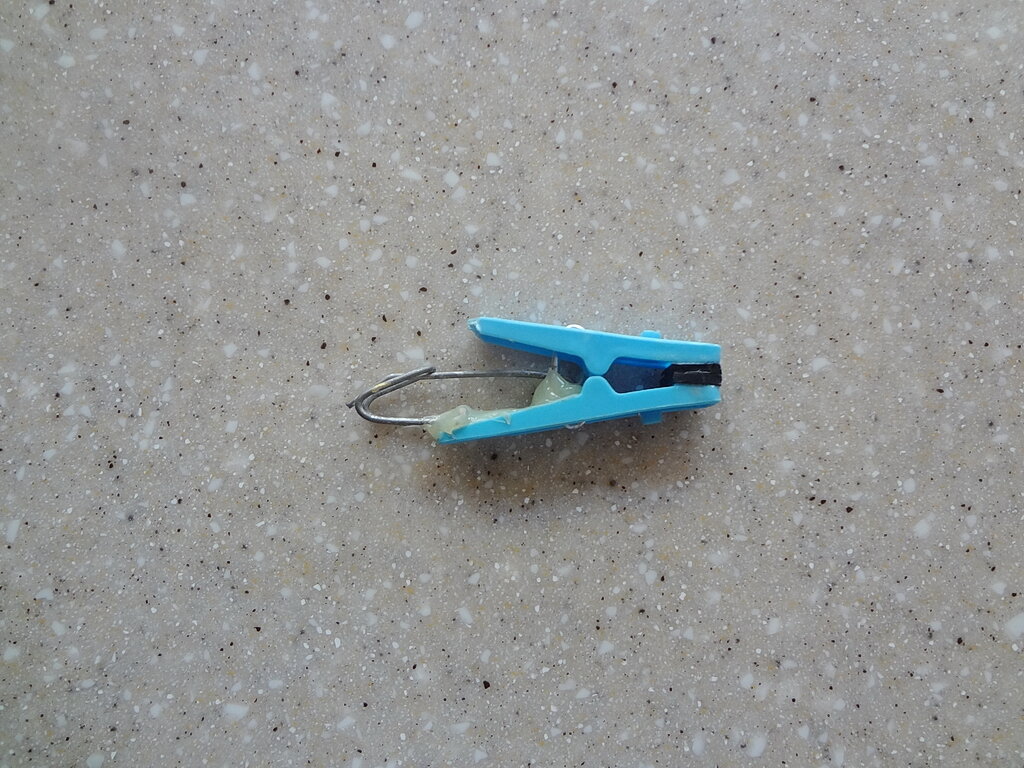-
Posts
13,873 -
Joined
-
Last visited
Everything posted by Sk8man
-
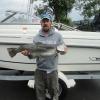
Nice day (Hughes)
Sk8man replied to Sk8man's topic in New York Fishing Reports - Lake Ontario (South Shore)
-
I talked Admiral Byrd into giving it a shot this morning and it turned out to be a beautiful and productive day. We motored out to the 5 hundreds to start as neither of us are into "zombie fishing" and marked a bunch of fish, and continued out to 725 ft. somewhere along the line my 300 copper took a shot and sunk the board after a nice fight we had 34 inch 14 lb male steelhead in the boat...he was spent and bleeding badly so we boxed him. As we headed in from the 700's we got into another steelie and some 7 or 8 pound kings which we released. Bob then caught a couple kings in the high teens to twentyish range on the riggers with mag spoons set about 70-75 ft deep. I had only one hit on my rigger but his was active (both of us using sliders). We each ran wires at various depths with paddles and Spin Docs neither had a touch the entire time despite multiple changes of set-ups..I had another smallish king on the 300 copper with a magnum Dreamweaver. While out there in the depths I had one of the hardest hits on the 300 copper that I have ever had in all my time fishing. After a huge couple runs which were continuing without me being able to control anything the haywire twist on the copper apparently gave way to the pressure and the fish took off north for Canada....with 300 foot of copper and my Dreamweaver. It was also the first time I have ever had a 30 pound copper break or break at the Spro swivel. Anyway it was a gorgeous day out there and Bob and I busted each other the entire time so we both had a lot of fun as well.
-

How Do You Spool Your Reels With New Line?
Sk8man replied to Todd in NY's topic in Tackle and Techniques
-
I usually clip mine to the backing right above the #8 Spro swivel that leads to the copper OR near the one that leads to the fluoro leader on the copper. I haven't ever had any problems attaching it anywhere in terms of line damage as the soft pinch pads attached to the weight doesn't do anything to the line or wire itself
-
A lot of good charters in Rock Harbor (Orleans) and many beaches for surf casting nearby. Very scenic and all sorts of things to do and not quite as far out as Truro and Wellfleet Harbor is just up Rt#6 a bit. Great area especially after the main tourist season (after Labor Day). The stripers come in pretty close on the ocean side (eg. Nauset and Coast Guard Beach) although now with the Great Whites after the seals I don't know.....
-

Sold / Closed x-16 LOWRANCE paper graph sonar
Sk8man replied to dhm's topic in Classifieds - Buy, Sell, Trade or Rent
Those were the days. I had a Heath Kit graph and was one of the first around that I knew of to have one. It came as a box full of diodes, a circuit board and case and had to be fully assembled including soldering all the diodes etc. into the circuit board. I almost died when I opened the package thinking it would be just a few screws and mounting the circuit board and it was a few hundred bucks which back then was a lot of money. Luckily my dad was an electronics repair guy and could fix or repair anything. He said' Let me take a look at it....leave it here on my work bench" In a couple weeks he called me and said "I have something for you" When I stopped by he had the graph fully assembled and working perfectly....I was never so relieved in my life. I used it for many years. I learned a lot from it too as I would go over the chart section after each outing plotting my "next move" -
Cool....My in-laws had a place mid Cape for about 30 years so I fished them out there from Chatham, Eastham, Nauset Beach etc. all the way out to P town. a lot of fun. Relatives now talking about getting another place out there so ....I'm keeping my fingers crossed on that one Good luck out there. The Cape is one of my favorite places on Earth....
-

Canandaigua Canandaigua south end 9-3-19
Sk8man replied to Sk8man's topic in Finger Lakes Discussion
Yeah Jim I think the browns are a notch up the line on the intelligence scale. At least you didn't have all the weeds stuck on a prop coming into the ramp -

Canandaigua Canandaigua south end 9-3-19
Sk8man replied to Sk8man's topic in Finger Lakes Discussion
Thanks Chuck. I think you may have a "solution" there -
I was thinking about going to Lake O solo this morning but my wife said " why don't you fish out here and I can go along". Of course I said "yes" (for a whole lot of reasons). We got a late start and were on the water about 10 AM (quit at 4PM) . I used 2 downriggers cheated and a 300 copper trolling first the east side down to Pelican Point then across by Wegman's and down the west side. Caught a total of 7 lakers despite fishing for rainbows. None was over 4 pounds. The interesting thing to me is that 6 came on the cheaters and one came on the 300 copper and my trolling speed was from 3.1 to 3.57 and nearly all came from 3.3 plus.....I couldn't get away from them; one even hit a magnum spoon No sign of rainbows today. Saw a lot of bait at the south end. I didn't run any deeper than about 6o feet over whatever (the 300 copper may have been running higher than usual too given the speed). Marked a lot of fish in the 40-60 ft range thinking they were probably rainbows but the ones that hit at least were lakers. I didn't put down the probe to check temps but surface was 74. Usually about now the rainbows are out in the middle portion of the lake so we fished mostly 140- 210 and most fish marked were in that range as was the bait. Strange day! Quite a few weeds out there, a lot of algae pooling up in long bands throughout the south end both sides and the fleas were there but "doable"
-
Ditto Mike. Seneca isn't "down for the count" yet and good to see it.
-
There are various grades of Frogg Toggs - the top graded ones are very nice but they are well over $100 ( I have the Toadz?)but in some things at least you get what you pay for and this may be one of those things. I think it pays to get a quality set no matter what you buy.
-
-

Sold / Closed Michigan Stinger Lot (standard size)
Sk8man replied to Hillside's topic in Classifieds - Buy, Sell, Trade or Rent
Geez Mike you're going to empty Cayuga out of fish -
That is another good thing to try. The sheathing on about any leadcore is what actually gives it it's strength the lead itself isn't very strong and not intended for that purpose anyway.
-
If it isn't the screw loosening I'm wondering about a) the underwater currents and your direction trolling and b) the speed you are trolling maybe interacting to tangle things up. The diver may be revolving instead of swaying out to the side.
-
The only problem will probably be trying to insert the mono through the sheathing of the microlead - not sure as I don't do it that way with the micro lead just the standard stuff in the past. Give it a try though as you can always go other ways if it doesn't pan out
-
Not sure from description whether you mean tangling of both divers together or tangling of your attractor/lure with the diver. I do wonder though if the screw holding the weight in place may be loosening up allowing it to "flop" back and forth perhaps? The weights do move a little inside the covering on mine and I have over a dozen of them that do it.
-
The #8 will go through the eyelets and tips of most rods and it is rated at 50 lbs. They also make a #10 which I believe is 35 lbs. but it is more difficult to tie knots with it. The Palomar should work and I'm sure there are others that will also work. I use the clinch knot with 7 turns on the fluoro end and 5 on the leadcore end and cinch down carefully and repeatedly and wet and then check them closely. A spot of instant glue can also be used on the knot. Never had one fail yet.
-
I use 20 lb fluoro leaders for Lake O and 12 lb for the Finger Lakes and #8 Spro swivels so I don't use knots directly from leadcore to leader. My thought is that it is possible to tie depending on knot but question is : Will it get through the eyes and tip of rod? Fluoro tends to be a smaller diameter than most mono.
-
x2 https://fishtfight.com/tuf-line-microlead-review
-
You may have to play with it under actual conditions to get the best result. While the water is warm might want to go into a shallow area get into the water try slight movement/adjustments and then try it out each time doing that to get the "best fit" just a suggestion....
-

Dead in the water in Mexico...
Sk8man replied to WalleyeLJ's topic in New York Fishing Reports - Lake Ontario (South Shore)
-


